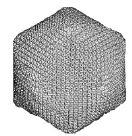Plant Pathology Department
Date of this Version
2018
Document Type
Article
Citation
Published in Microbial Ecology 75 (2018), pp 847–853.
doi 10.1007/s00248-017-1106-8
Abstract
Many chloroviruses replicate in endosymbiotic zoochlorellae that are protected from infection by their symbiotic host. To reach the high virus concentrations that often occur in natural systems, a mechanism is needed to release zoochlorellae from their hosts. We demonstrate that the ciliate predator Didinium nasutum foraging on zoochlorellae-bearing Paramecium bursaria can release live zoochlorellae from the ruptured prey cell that can then be infected by chloroviruses. The catalysis process is very effective, yielding roughly 95% of the theoretical infectious virus yield as determined by sonication of P. bursaria. Chlorovirus activation is more effective with smaller Didinia, as larger Didinia typically consume entire P. bursaria cells without rupturing them, precluding the release of zoochlorellae. We also show that the timing of Chlorovirus growth is tightly linked to the predator-prey cycle between Didinium and Paramecium, with the most rapid increase in chloroviruses temporally linked to the peak foraging rate of Didinium, supporting the idea that predator-prey cycles can drive cycles of Chlorovirus abundance.
Movie 1
DeLong ME 2018 Size-dependent Catalysis MOVIE2.mp4 (5940 kB)
Movie 2


Comments
Copyright © 2017 Springer Science+Business Media, LLC. Used by permission.
Electronic supplementary material (two movies as .mp4 files) is attached to the repository record for this article. [below]